Do the piles of onions at the grocery store look a little intimidating? Are you wondering if you can substitute that red onion at home for the sweet onion your recipe calls for? There are so many members of the onion family, all belonging to the genus Allium, finding exactly what you’re looking for can get difficult. Don’t worry. We’re here to help. We have gathered details about twelve popular types of onions, so you don’t have to do any more digging. Below, you will discover flavor notes, how to spot each in the store, and ways to use them in the kitchen.
1. Chives
While chives typically get used as an herb for culinary purposes, they are in the Allium family. They are thin and long like green onions but lack the white, edible bulb. They have a distinctly mild flavor, making them ideal garnishes or mixed into lighter dishes. And their flowers are also edible.
Chives go well in salad dressings, mixed into soft cheeses, added to chip dips, or sprinkled as a garnish on countless dishes. The blossoms can be added as a seasoning or garnish. Or, feel free to pickle them.
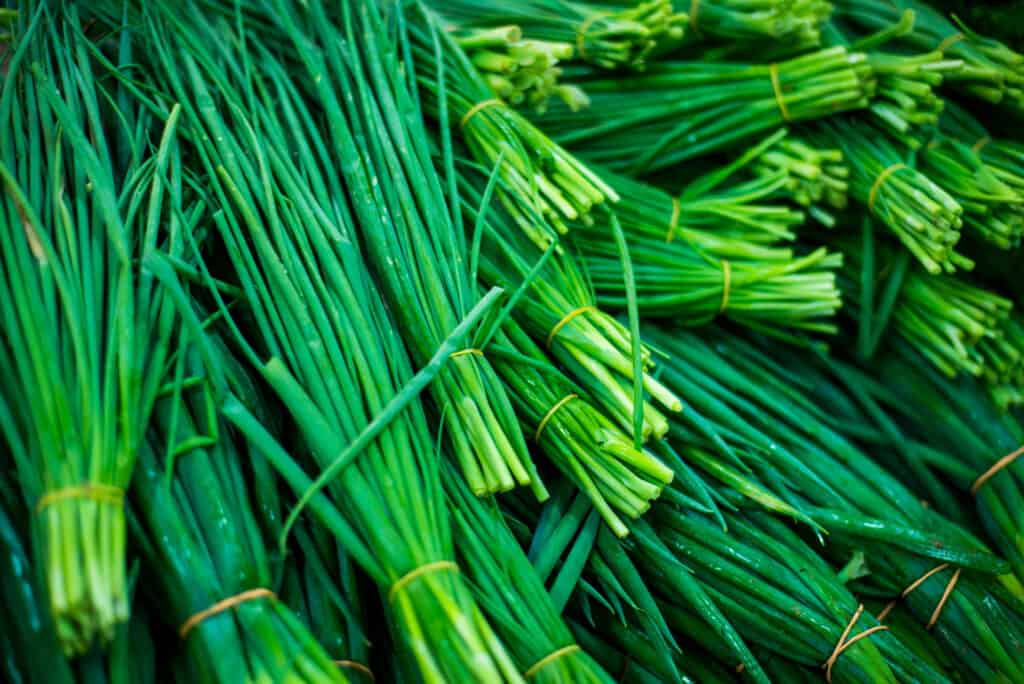
Chives and chive blossoms typically get used like an herb. But they are also part of the
Alliumfamily.
©Heitor Pergher/Shutterstock.com
2. Cipollini Onion
You may mistake this for a sweet onion at first glance, thanks to its squatter shape. Their flavor is far more pleasant than that of their cousins. Plus, they are smaller and can be cooked whole.
Try them roasted, grilled, sauteed, or even creamed! Additionally, feel free to substitute them for other types if you like their milder flavor.
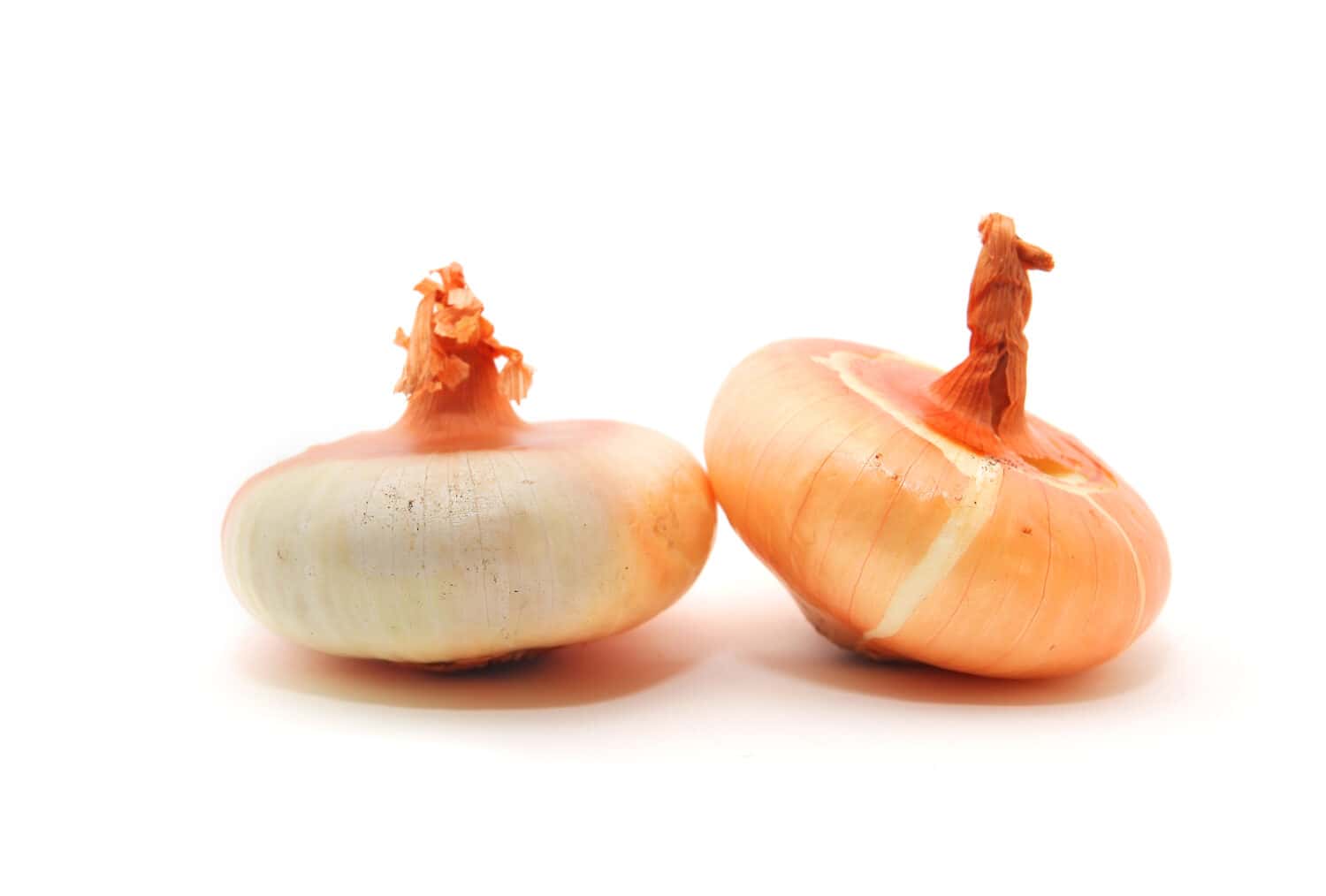
Cipollini are smaller and squatter, so they often get mistaken for sweet onions.
©Kelvin Wong/Shutterstock.com
3. Garlic
Yes, you read that right! Garlic belongs to the Allium family. On its own, garlic has a strong and spicy bite. However, you can get some sweetness out of the cloves by roasting them until golden brown. And the tops (garlic scapes) are also edible. They have a milder flavor than the cloves.
Feel free to add garlic to anything and everything. Make garlic-infused vinegar for a flavorful salad dressing. Cut slits in your red meat and stuff some cloves inside to impart a world of taste. Saute, pickle, or roast them. And don’t forget to add cloves to any dish to deepen the flavor.
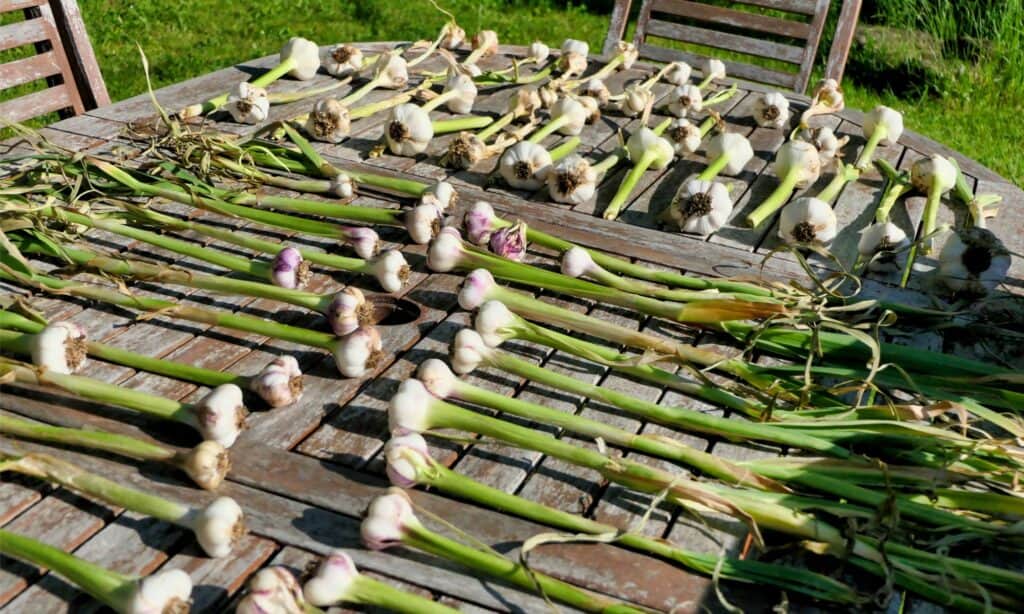
Garlic is a member of the
Alliumfamily and has a much stronger flavor than its relatives.
©iStock.com/PlazacCameraman
4. Green Onion
You may also know this type as scallions. They are significantly smaller than their cousins and live in a different part of the produce section since they need refrigeration. Scallions get sold in bunches. They have long, slender green tops and small white bulbs at the base. This category is ideally suited for Asian cuisine. You can add them toward the end of cooking to preserve their mild, delicate flavor or use them as a garnish.
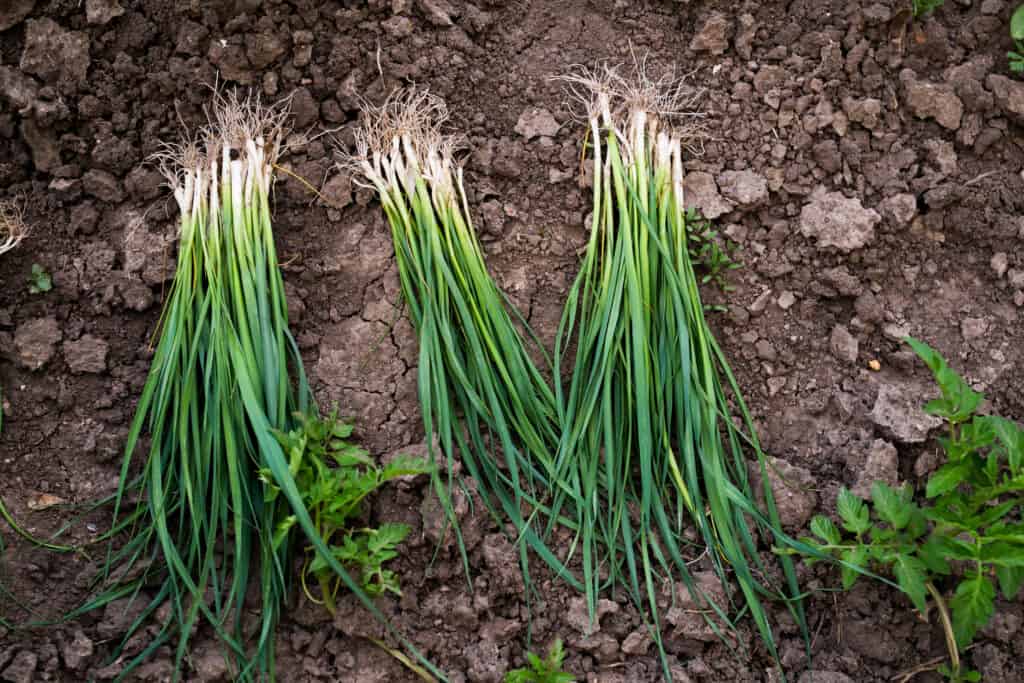
Look for small bunches of green onions in your produce department. Everything but the roots is edible!
©iStock.com/Dumitru Ochievschi
5. Leeks
These unobtrusive vegetables often go untouched in the produce section because people don’t know what to do with them. And while processing and cleaning them is a slight pain, the unmatched flavor is worth it. Leeks look almost like enormous green onions. The difference is that you don’t want to eat the green parts (though you can add them to stocks or soups to enhance their flavor).
Leeks are great roasted, stir-fried, stuffed, or braised.
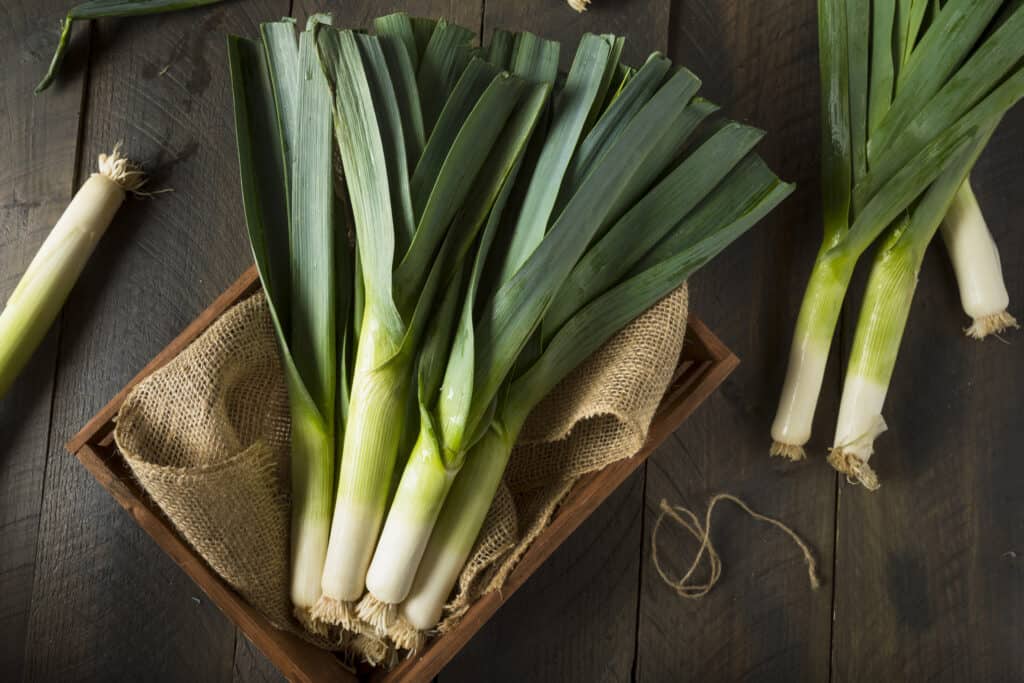
Clean leeks well after cutting and before eating. Lots of dirt gets trapped between the layers.
©Brent Hofacker/Shutterstock.com
6. Pearl Onion
Sometimes, pearl onions get marketed as cocktail onions due to their small size. You can find this type in red, white, or yellow varieties. They have a delicate and sweet flavor, unlike the sharper bite that their larger cousins have.
Add them to stews for a unique twist. Or you can glaze, cream, roast, or pickle them.
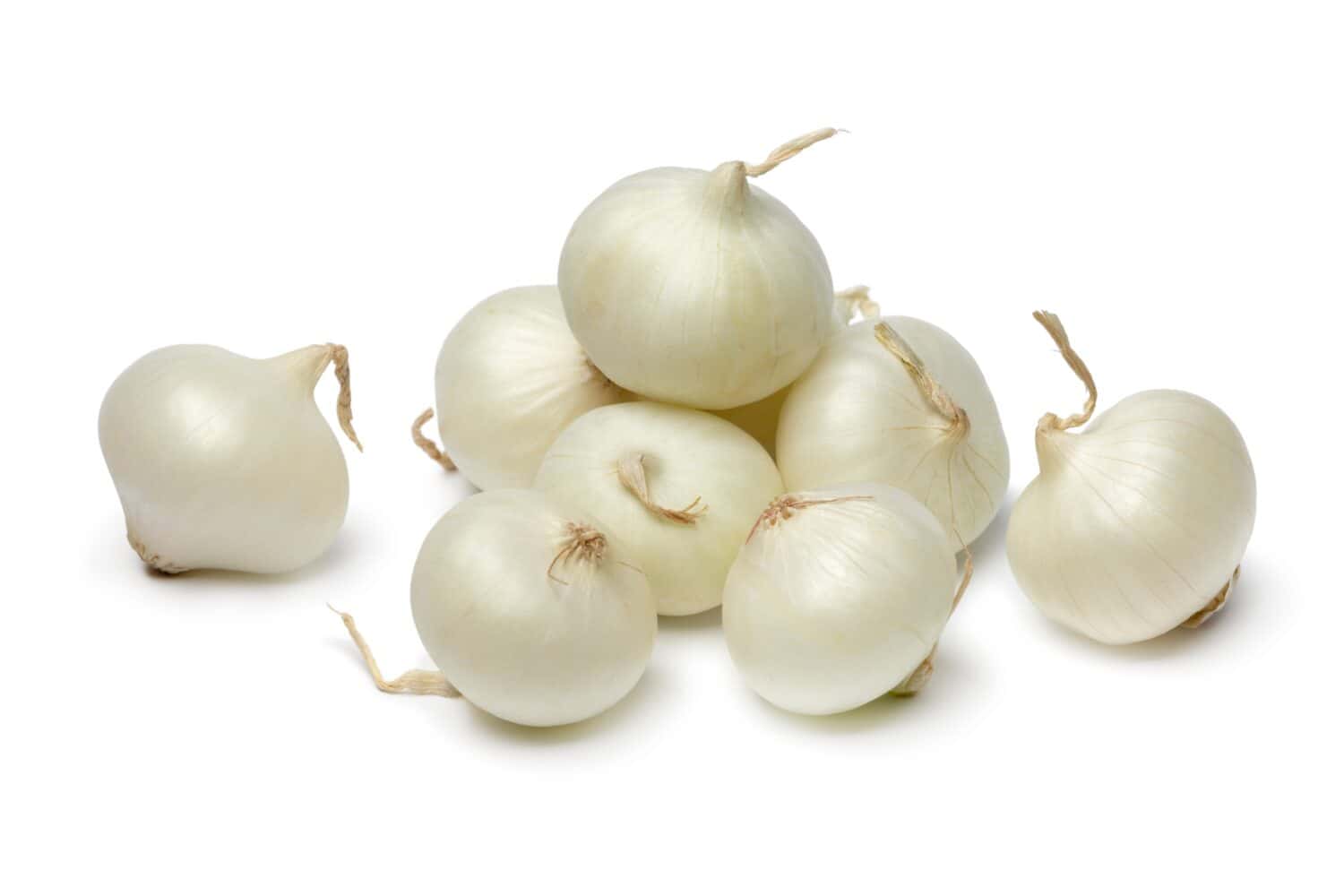
Pearl onions are a smaller member of the
Alliumfamily. They have a lighter flavor and are fantastic in many culinary preparations.
©Picture Partners/Shutterstock.com
7. Ramps
Look for this tasty member of the onion family at your local farmer’s market during the summer. There is a slim chance you will find them in your produce section since they don’t store well. They are a type of spring onion native to North America and packed with flavor. The full ramp is edible. And its flavor will change depending on whether you eat it raw or cooked. Raw ramps are potent and pungent. However, cooked ramps develop a slightly sweet flavor.
Use ramps in pesto, or replace your green onions with them in any recipe.
8. Red Onion
Despite their name, this onion type has an almost purplish hue to the skin and internal parts. This group often gets added to salad for a crunch and a bit of pizazz. While some people find red onions flavorful, others believe they have the sharpest bite.
They will often overpower the flavor of dishes, so use them sparingly in cooking. And if you do try to experiment with them in the kitchen, try adding them to a bold dish. You can continue to use this category in raw applications like salads. Or consider pickling them to add a beautiful and delicious bite to tacos or slaw.
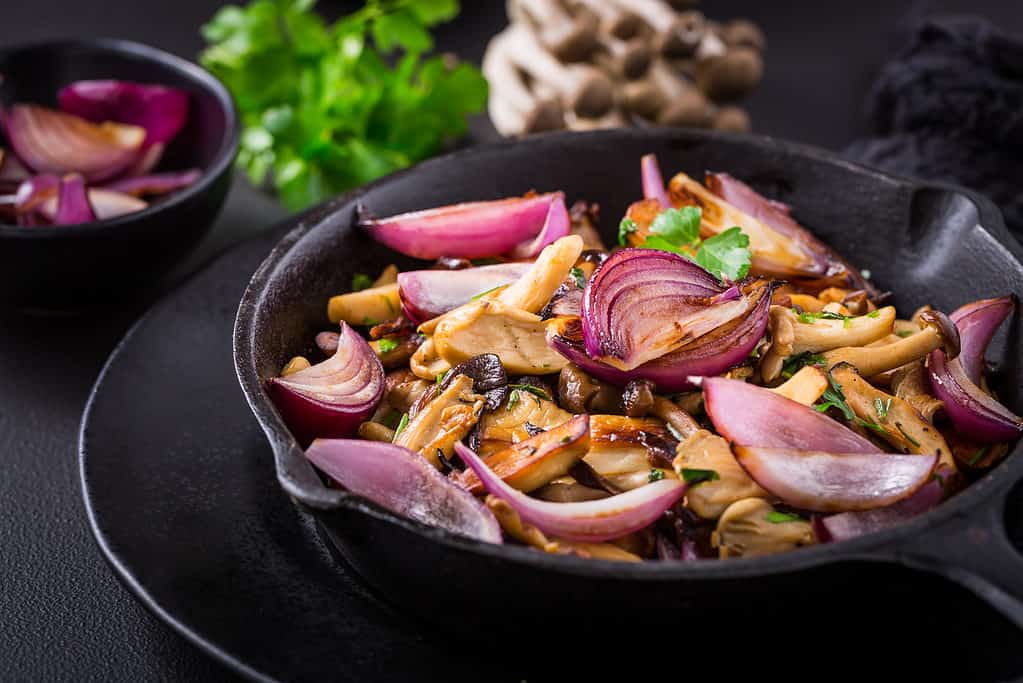
While red onions are traditionally eaten raw, they also lend themselves to roasted or braised dishes. Experiment with them in the kitchen!
©Ingrid Balabanova/Shutterstock.com
9. Shallots
In the grocery store, you will often find shallots near the tomatoes, garlic, or avocados. They are small and look like garlic bulbs. But, only two small heads are inside the dark reddish-brown, paper-thin skin. They are mild and slightly sweet with a lingering pungent aftertaste.
You can use them in Asian cuisine, replace standard onions in nearly any recipe, or add them to your favorite homemade salad dressing recipe.
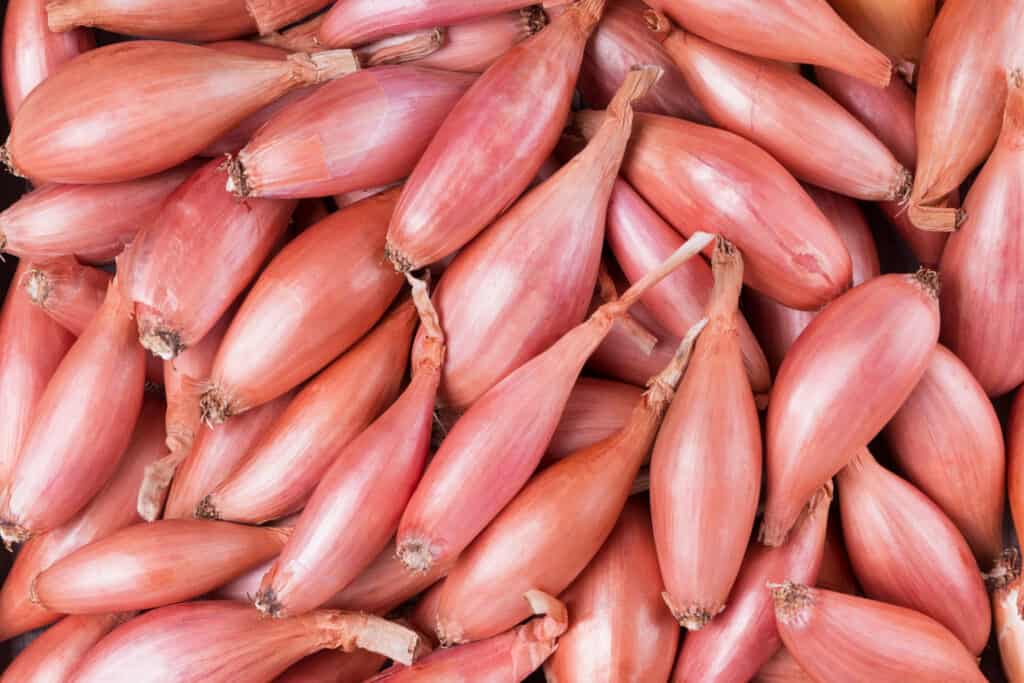
Shallots are small, packed with flavor, and covered in a deep reddish-brown, thin skin.
©iStock.com/A_M_Radul
10. Sweet Onion
If you are one of those who wait all year for Vidalias or Walla Wallas to appear in your produce section, you understand the buzz about this delicious onion type. The varieties under this umbrella were bred to highlight the sugar content. So they are all sweeter, and some say more flavorful, than their yellow counterparts.
If you don’t like the traditional strong bite other varieties have, consider replacing them with sweet onions. A few good culinary applications include stews, soups, stir-fries, and caramelized onions.
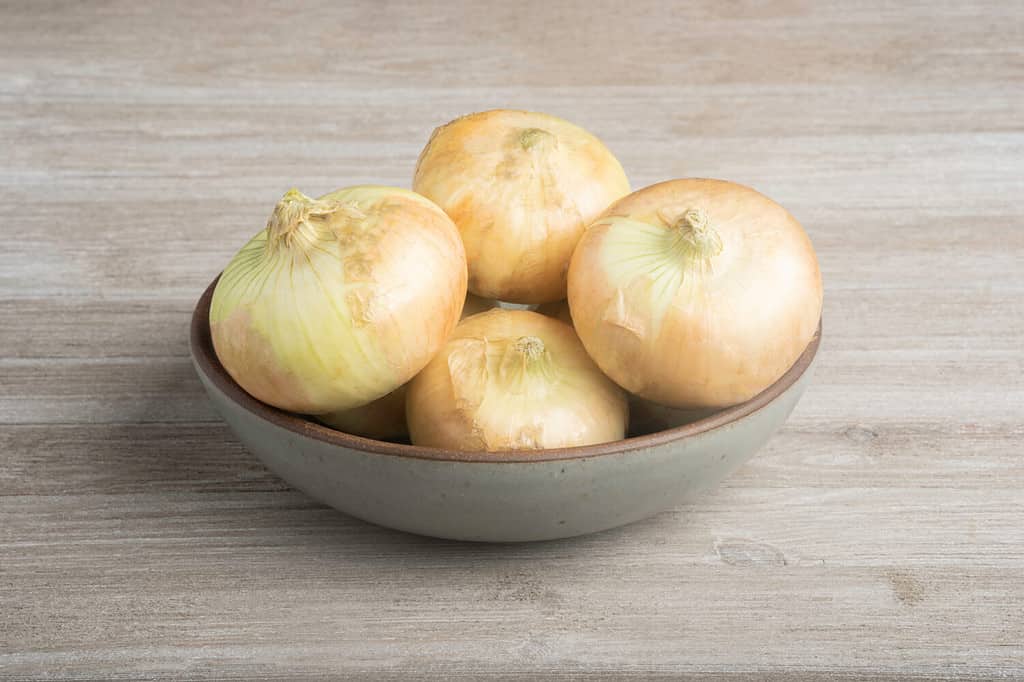
If you don’t like the traditional strong bite other varieties have, consider replacing them with sweet onions.
©Dominique James/Shutterstock.com
11. White Onion
The milder flavor of white onions makes them both popular and versatile. They get their name from the notably white outer skin and flesh.
You may find them included in salads. But the most common place white onions show up is in Mexican cuisine. They are ideal in salsas, guacamole, and garnishes for tacos.
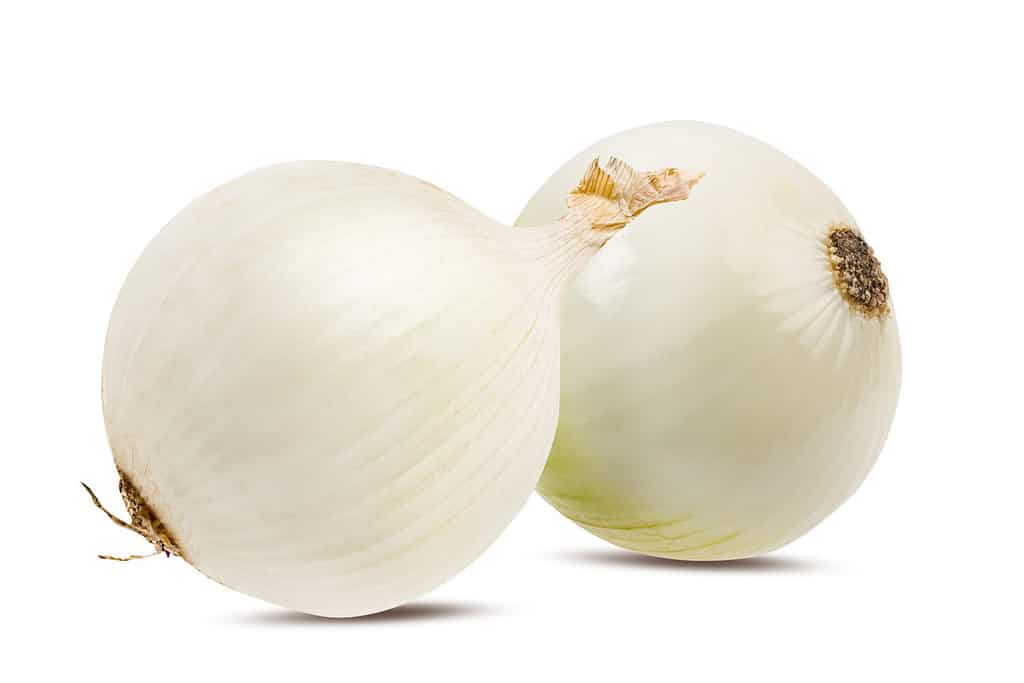
White onions get their name from the notably white outer skin and flesh.
©Kate Cuzko/Shutterstock.com
12. Yellow Onion
Yellow onions are ubiquitous in the grocery store. They are the most common type of onion used in cooking. Varieties falling under this broad umbrella are distinguishable by relatively papery, brownish outer skin. They have a milder, more mellow flavor than red onions, which makes them extremely versatile.
A few great ways to use yellow onions include caramelized onions or French onion soup. Add them to stews, stir-fries, regional cuisines, or grilled kebabs.
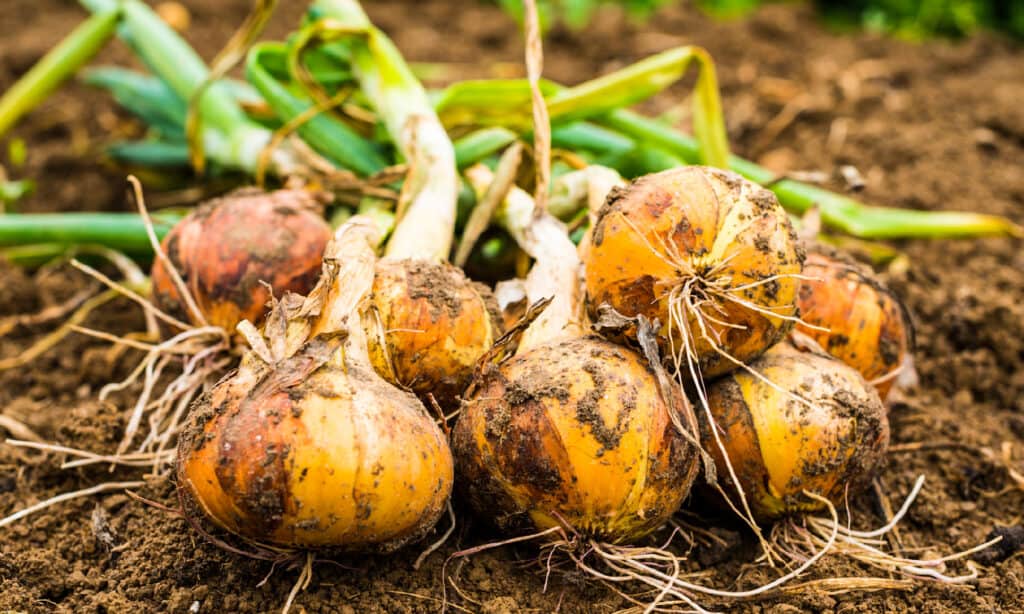
Yellow onions are the most common type of onion used in cooking.
©iStock.com/rootstocks
Summary of the 12 Most Popular Types of Onions
| Number | Type |
|---|---|
| 1 | Chives |
| 2 | Cipollini Onion |
| 3 | Garlic |
| 4 | Green Onion |
| 5 | Leeks |
| 6 | Pearl Onion |
| 7 | Ramps |
| 8 | Red Onion |
| 9 | Shallot |
| 10 | Sweet Onion |
| 11 | White Onion |
| 12 | Yellow Onion |
The photo featured at the top of this post is © Svecha-65/Shutterstock.com
Thank you for reading! Have some feedback for us? Contact the AZ Animals editorial team.







